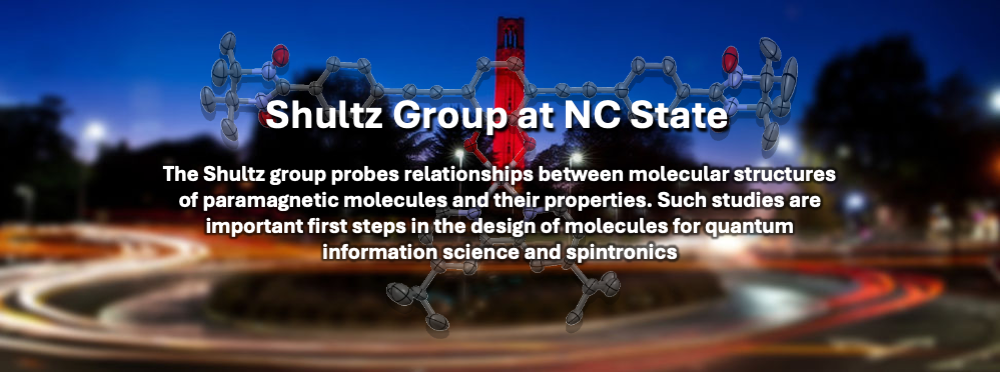Optically-Generated Spin Polarization
Quantum information science (QIS) exploits the inherent properties of quantum superposition and entanglement of e.g., electron and nuclear spins (qubits) to transform future technologies that include aspects of quantum sensing, computing, communications, metrology, and cryptography. Two key topics described in the BES Roundtable on Opportunities for Basic Research for Next-Generation Quantum Systems and elaborated on in the more recent DOE Workshop on Exploiting Photons and Spins in Chemical Systems for Quantum Information Science describe (1) the need for new quantum-coherent systems having unprecedented functionality, and (2) the need for enhanced creation and control of coherence in quantum systems.
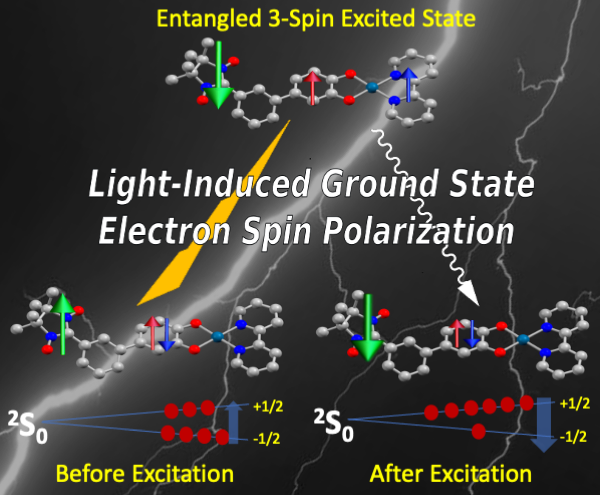 Our approach to molecular systems aligned with these Roundtable/Workshop topics is to utilize bespoke radical-elaborated compounds that possess excited-state (ES) magnetic exchange interactions, which we have shown to control both ES lifetimes and ES electron spin polarizations. Our primary focus will be to engineer and spectroscopically probe novel molecular systems that retain the memory of ES spin polarizations in their recovered ground states (GSs). The ESs are formed by optical pumping using visible light, leading to ultrafast generation of exchange-coupled spin qubits and exchange-modulated electron spin polarizations. The photophysical properties of our molecules display tremendous promise for understanding how to address, control and manipulate molecular spin qubits, furthering our understanding of their spin dynamics and communication between qubits. These important, fundamental studies are conducted in collaboration with the Kirk Group in the Department of Chemistry & Chemical Biology at the University of New Mexico and are funded by the Department of Energy.
Our approach to molecular systems aligned with these Roundtable/Workshop topics is to utilize bespoke radical-elaborated compounds that possess excited-state (ES) magnetic exchange interactions, which we have shown to control both ES lifetimes and ES electron spin polarizations. Our primary focus will be to engineer and spectroscopically probe novel molecular systems that retain the memory of ES spin polarizations in their recovered ground states (GSs). The ESs are formed by optical pumping using visible light, leading to ultrafast generation of exchange-coupled spin qubits and exchange-modulated electron spin polarizations. The photophysical properties of our molecules display tremendous promise for understanding how to address, control and manipulate molecular spin qubits, furthering our understanding of their spin dynamics and communication between qubits. These important, fundamental studies are conducted in collaboration with the Kirk Group in the Department of Chemistry & Chemical Biology at the University of New Mexico and are funded by the Department of Energy.
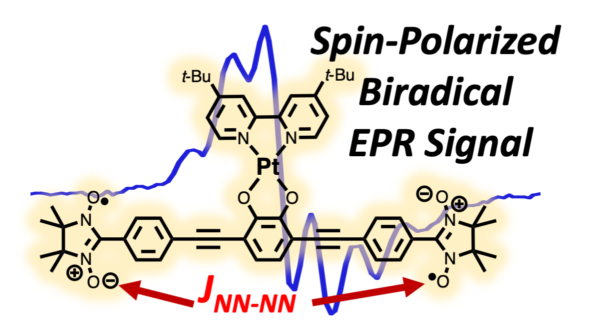
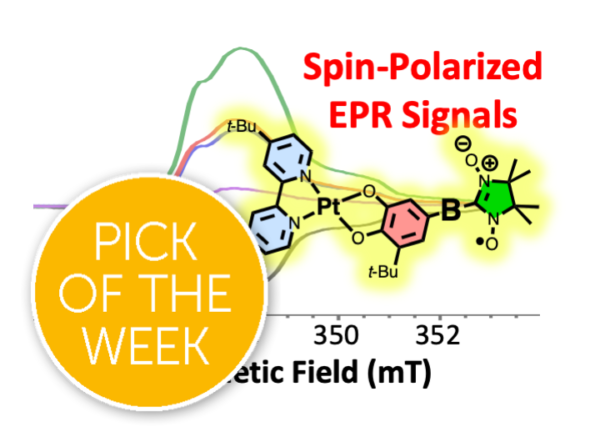
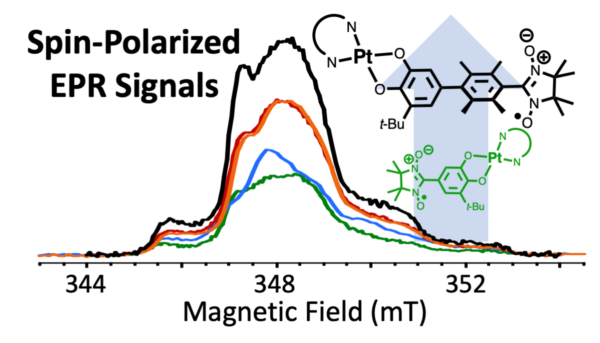
Metal Complexes of Donor-Acceptor Biradicals
For many years with NSF funding, we designed, synthesized and characterized transition metal complexes of semiquinonate and catecholate-type ligands. Of particular interest to our group are the factors affecting magnetic interactions amongst unpaired electrons within the same molecule. Collectively, these interactions are called “exchange coupling” (designated by the exchange parameter, J) and our group has revealed how substituents, electron delocalization, conformation, and donor-acceptor interactions define both the sign (J>0 = high-spin ground state; J<0 = low-spin ground state) and magnitude of J. We use a superexchange-type model to correlate experimentally-determined exchange parameters with the electronic coupling, H. We make this correlation because the electronic coupling is of paramount importance in electron transfer (electron transfer rate constants vary as the square of H) and in electron transport in single-molecule electronic devices. These important, fundamental studies are conducted in collaboration with the Kirk Group in the Department of Chemistry & Chemical Biology at the University of New Mexico.
